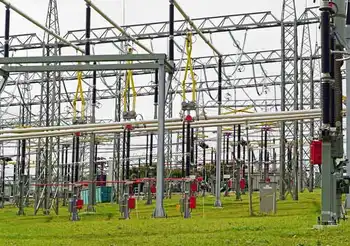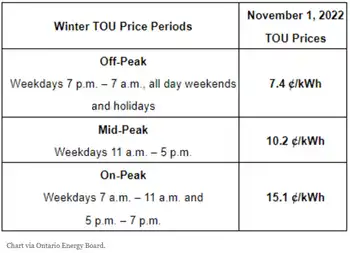Remote energy control systems get boost after blackout
- With a few clicks of a computer mouse, Sears Canada Inc. and the London Health Sciences Centre expect to shave millions from their energy bills and ease the load on Ontario's beleaguered hydroelectric system.
Sears and the London, Ont.-based health centre are among an increasing number of Canadian organizations using sophisticated Web-enabled computer systems to remotely control and monitor air conditioners, heating equipment and lights, eliminating the need to scurry from office to office and building to building to extinguish lights and adjust thermostats.
The value of automated energy-control systems operated over the Internet became much more apparent in the wake of this summer's blackout that paralyzed much of Ontario and forced businesses to quickly reduce their power needs to stabilize the province's fragile power grid.
Sears expects its building-automation system to reduce energy costs at its 67 Ontario stores by 10 per cent in the coming year; the London hospital is forecasting a 5- to 10-per-cent decrease in the $8.5-million annual energy cost rung up at more than 40 buildings on its three campuses.
Shortly after power was restored after the blackout, the Sears system reduced energy consumption by 40 per cent within 48 hours at all of the company's Ontario department stores and home furnishings outlets. Power usage at the London health-care facility was cut by about 12 per cent within 24 hours.
"We always knew the potential for more savings was there but we never applied it," says Tom Campbell, national manager of facilities at Sears in Toronto.
"The blackout, and being given more latitude from our business operations to implement various strategies, will help us reduce our energy costs by millions of dollars," he adds. "Without the system, turning down lighting and air conditioning is a painful process that could take staff three to four hours per store."
Since the mid-1990s, Sears has been using the Integrated Building Automation System (IBAS) developed by Direct Energy Business Services of Mississauga. The London Health Sciences Centre system, called Enterprise Building Integrator, was purchased from Honeywell Canada Ltd. in 1997.
Power usage at Sears is controlled from computer screens located at Direct Energy's offices in Mississauga and a Sears service centre in Belleville, Ont. At the London centre, modifications are made remotely on desktop computers operated by engineering staff at various sites on its three campuses.
"The network-based system allows staff at each campus the ability to control systems at the other sites as well as their own," says Phil Renaud, the centre's manager of engineering services.
At Sears outlets, IBAS systems are used when stores are closed to automatically reduce or turn off accent and other in-store lighting and reduce heating or air conditioning. At the London health centre, the Honeywell system automatically reduces heating, cooling and lighting in offices and common areas where patient care is not affected.
Since the August blackout, the systems have been called upon to conserve even more power.
The Sears system has been reprogrammed to automatically reduce air temperatures and douse in-store lights 30 minutes after closing time, rather than up to two hours later as before, says Mr. Campbell. In corridors and waiting areas at the London health centre, lighting has been cut as much as 50 per cent and temperatures reduced up to 2 degrees.
In the event of a spike in energy demand during business hours in the coming cold season, the Sears system can reduce temperatures in individual stores by 1 to 2 degrees, Mr. Campbell says.
"If it's a Monday morning and you could shoot a cannon off in a store, we will do exactly what we did post-Aug. 14 -- adjust temperatures to reduce energy usage."
As part of a pilot project, the London health centre is soon to install a similar system developed by Honeywell that would allow its engineers to go to their computer screens to turn off devices such as air conditioners if energy costs increase at any given point in the day.
Mr. Renaud says the technology will come in handy now that Ontario's new Liberal government has announced rates will no longer be capped.
"When rates were not frozen, electricity costs often rose as much as 500 per cent'' as demand heightened in peak periods, Mr. Renaud says. "At 2 p.m., when there is peak power demand, we can decide to turn off various devices to reduce our load.''
As was the case after the blackout, the challenge for businesses is to conserve energy while retaining comfort levels for employees and users of facilities.
At the six-million-square-foot London centre, power reductions are more complicated than at a department store because certain areas, primarily operating rooms, cannot function properly with reduced lighting and increased air temperatures.
The task is made easier by 9,000 control and monitor points that keep track of room temperature, air quality and humidity throughout the centre's campuses. These allow engineering staff to observe the impact of changes in air temperatures and, when necessary, make adjustments remotely.
In many areas of the complex -- with the exception of operating rooms and patients' rooms -- the temperature of heated air is being decreased to 18 degrees from the normal 20 degrees. If cold weather makes warmer conditions necessary, the system automatically boosts temperatures, says Mr. Renaud.
Although the power outage produced some anxious moments for administrators at the London centre, the end result has been positive because staff in several non-patient areas, including offices that house human resources and finance staff, have found they can function comfortably with less lighting and reduced temperatures, says Mr. Renaud.
The blackout has also had a silver lining for Direct Energy. Tim Schneider, vice-president of operations and technology, says the company has been asked to give price estimates for the installation of automation systems in nearly 400 buildings; the company typically does about 60 price estimates annually, he says.
Related News

Yukon eyes connection to B.C. electricity grid
WHITEHORSE - Yukon's energy minister says Canada's push for more green energy and a net-zero electricity grid should spark renewed interest in connecting the territory's power to British Columbia.
Minister of Energy, Mines and Resources John Streicker says linking the territory's power grid to the south would help with the national move to renewable energy, support the mineral extraction required for green projects, and improve northern energy and Arctic security.
"We're getting to the moment in time when we will want an electricity grid which stretches from coast to coast to coast. … I think that the moment is coming for this…




